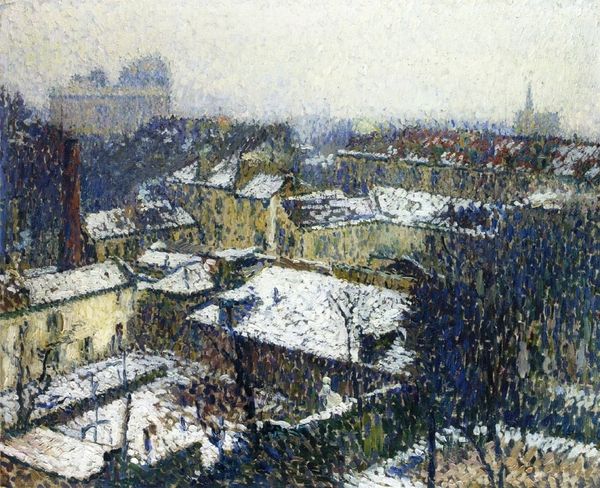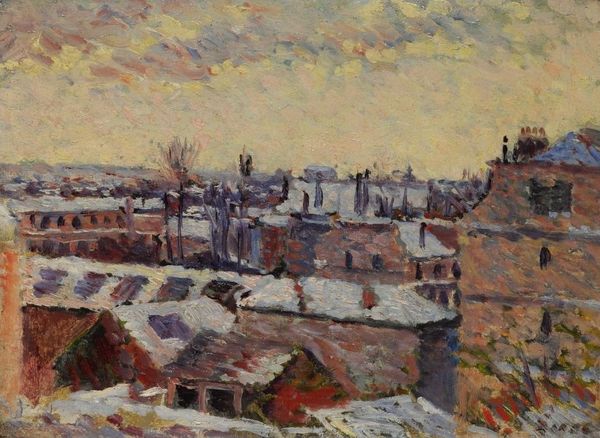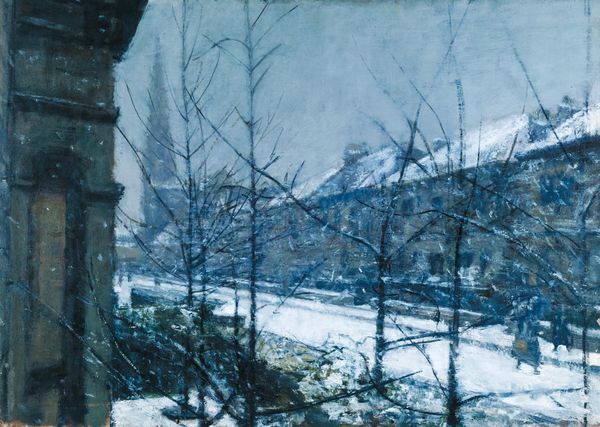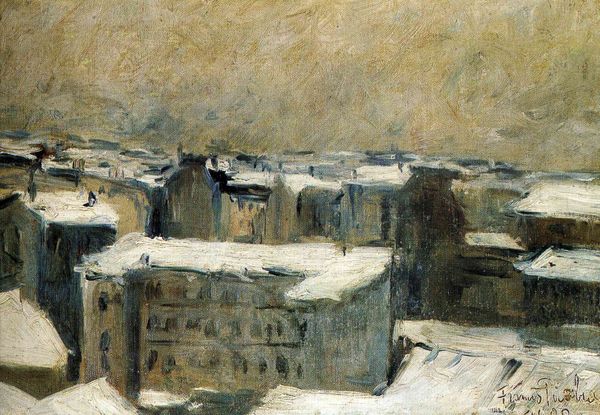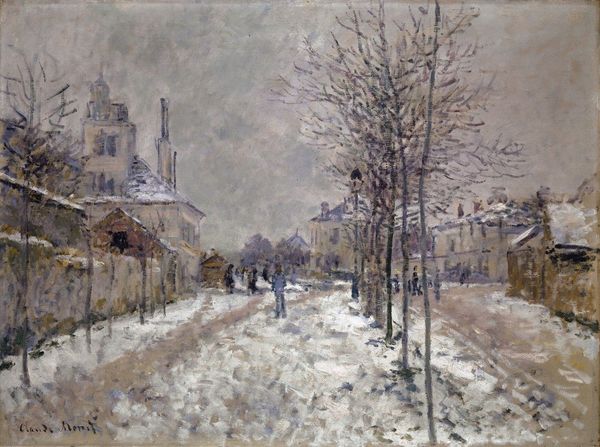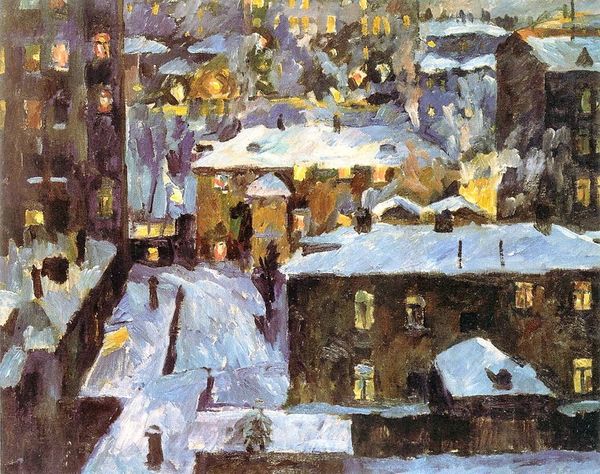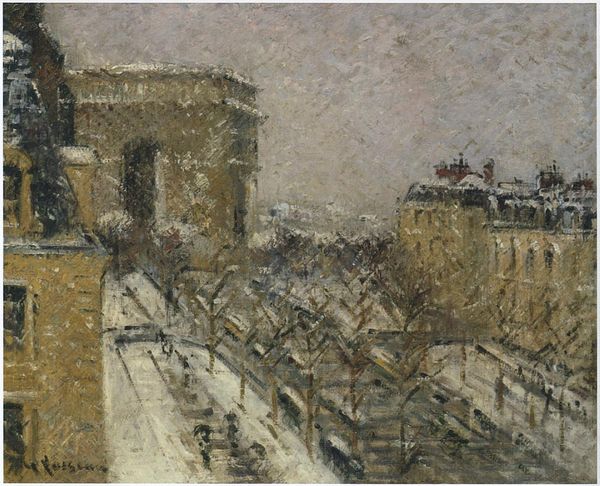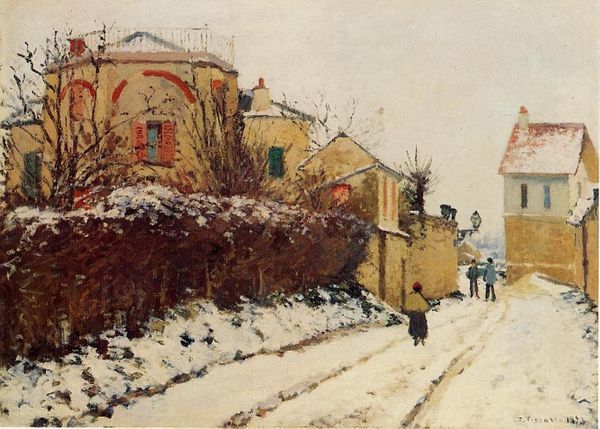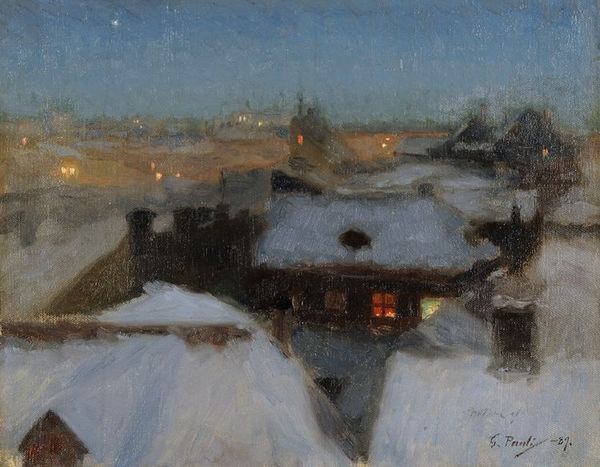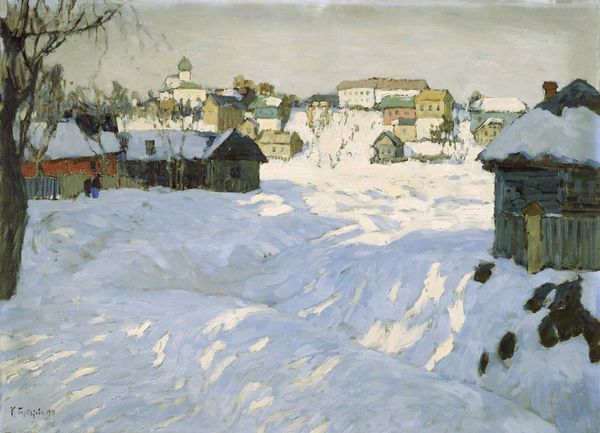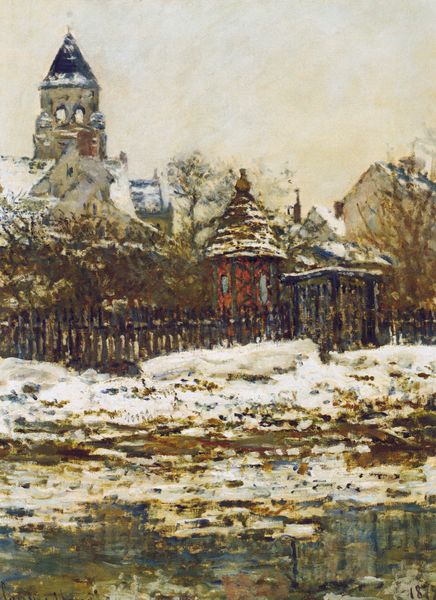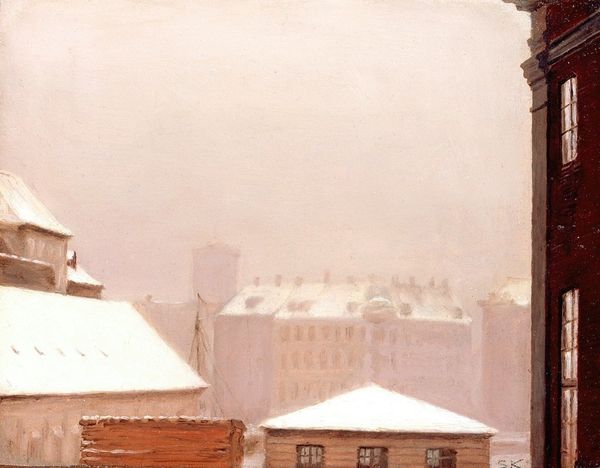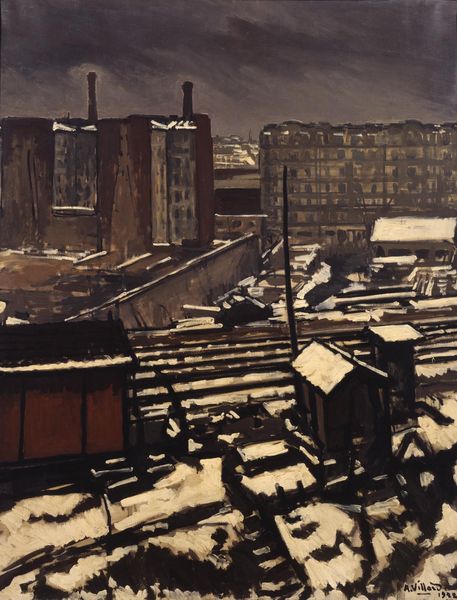
painting, plein-air, oil-paint
#
painting
#
impressionism
#
plein-air
#
oil-paint
#
landscape
#
oil painting
#
cityscape
#
realism
Copyright: Public Domain: Artvee
Curator: Gustave Caillebotte’s "Rooftops in the Snow," painted in 1878, offers a fascinating glimpse into Parisian life through a specific lens: the winter cityscape. The oil painting embraces a restrained palette to render its subject. Editor: There’s something melancholy about it. The snow-laden roofs feel heavy, almost oppressive. Despite the realism, the near-monochrome scheme evokes a sense of stillness and isolation. Curator: Indeed. What you're likely responding to is Caillebotte’s strategic manipulation of perspective and tone. His positioning almost shrinks the individuals within those homes while emphasizing their isolation by focusing solely on what their architecture looks like during one of winter’s harshest days. Editor: The rooftops almost appear like frozen waves, their surfaces broken by chimneys, but the scene feels starkly devoid of human warmth, the houses seeming like mausoleums and even the warm color of brick on the chimneys has become subsumed into the winter. Curator: The urban landscape of the late 19th century was transforming drastically, which Caillebotte illustrates well here; we see both old and new coexisting. "Rooftops in the Snow" highlights this dichotomy as it reflects upon a society facing great industrial shifts alongside urban reforms that uprooted traditional Parisian life. It isn't merely portraying beauty for its sake but examining and dissecting social evolution. Editor: But don't you also see a story? Perhaps it represents the burdens that these architectural buildings metaphorically shoulder in the form of snow—their inhabitants insulated in warmth and light at their expenses. Perhaps that same roof symbolizes how protective architecture has evolved throughout civilization? Curator: Absolutely, there’s the ever-present tension Caillebotte portrays when documenting transformations sweeping over 19th century urban environments during rapid urbanization. By analyzing those socio-economic contexts represented here, it’s difficult to deny there lies much deeper symbolism. Editor: In its somber yet tranquil nature—and how Caillebotte manages, subtly, to let both of us find those dual representations—"Rooftops in the Snow" really does echo both our internal lives amidst exterior change! Curator: Agreed. Looking closer certainly does expand this silent observer into dialogues around societal progress with symbolic significance far from first impression!
Comments
No comments
Be the first to comment and join the conversation on the ultimate creative platform.
